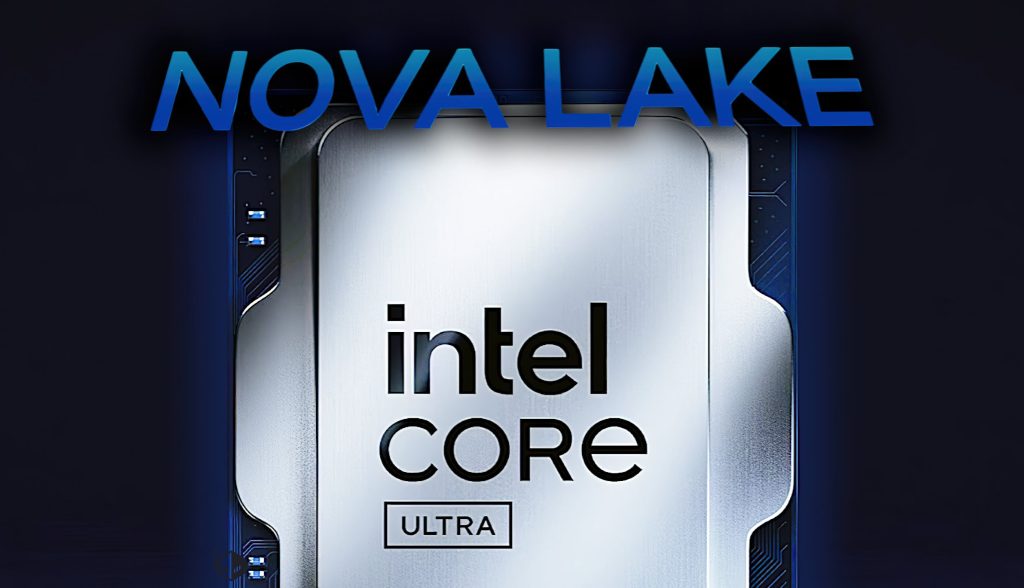As the competition in the CPU market intensifies, Intel is reportedly gearing up to launch its next-generation Nova Lake CPUs with a design focused on enhanced gaming performance. In a bid to close the performance gap with AMD’s successful Ryzen X3D processors, Intel’s upcoming offerings will feature larger caches—an essential component for boosting data access speeds and overall efficiency in gaming and multitasking environments.
Intel’s New Strategy: The Nova Lake Architecture
The Nova Lake series, expected to launch in 2026, is positioned as a direct response to AMD’s Ryzen 3D V-Cache CPUs, which have set new standards for gaming performance. AMD’s Ryzen 3D V-Cache processors, including the 5800X3D and subsequent models like the 7800X3D and 9800X3D, have demonstrated increasing capabilities, making Intel’s position in the gaming sector more precarious. The introduction of larger caches in the Nova Lake CPUs aims to mitigate this disadvantage, enhancing gaming experiences that demand high-speed data processing.
Intel plans to introduce the Nova Lake CPUs with various configurations, including the Core Ultra 9, Core Ultra 7, and Core Ultra 5, featuring combinations of Performance (P) and Efficiency (E) cores. For example:
- Core Ultra 9: 16 P-Cores + 32 E-Cores + 4 LP-E Cores (150W)
- Core Ultra 7: 14 P-Cores + 24 E-Cores + 4 LP-E Cores (150W)
- Core Ultra 5: 8 P-Cores + 16 E-Cores + 4 LP-E Cores (125W) + bLLC variant
- Core Ultra 5: 8 P-Cores + 12 E-Cores + 4 LP-E Cores (125W) + bLLC variant
- Core Ultra 5: 6 P-Cores + 8 E-Cores + 4 LP-E Cores (125W)
- Core Ultra 3: 4 P-Cores + 8 E-Cores + 4 LP-E Cores (65W)
- Core Ultra 3: 4 P-Cores + 4 E-Cores + 4 LP-E Cores (65W)
Performance Expectations: Cache Sizes and Configurations
Intel’s move towards integrating larger last-level caches (LLC) is expected to create significant improvements in performance metrics. Early reports suggest that the Nova Lake CPUs might feature caches as large as:
- Core Ultra 9: Up to 180 MB of LLC
- Core Ultra 7: Up to 144 MB of LLC
- AMD Ryzen 9: Up to 128 MB of 3D V-Cache
- AMD Ryzen 7: Up to 96 MB of 3D V-Cache
These enhancements will provide Intel a competitive edge, particularly in gaming scenarios where rapid access to data is crucial. However, not all Nova Lake CPUs will utilize the larger bLLC configurations; the higher core count models, such as those with up to 48 cores, may launch subsequently without this technology.
For more technical insight, the upcoming Nova Lake CPUs will adopt Intel’s latest architectures, including ‘Coguar Cove’ for Performance cores and ‘Arctic Wolf’ for Efficiency cores. According to a report from VideoCardz, the transition to larger caches is key in retaining competitiveness against AMD’s advanced designs, particularly in the gaming sector. This strategic shift is anticipated to help Intel achieve an estimated 10% increase in single-thread performance and a 60% boost in multi-threaded tasks compared to previous generations.
Moreover, the upcoming release of Intel’s Arrow Lake refresh serves as a bridge to the Nova Lake launch, with some reports indicating modest performance enhancements over the existing Alder Lake and Raptor Lake processors. While these chips may not generate as much excitement, they will serve to maintain Intel’s foothold in the market until the more formidable Nova Lake series arrives.
Market Response and Future Implications
The CPU market landscape has undergone substantial shifts in recent years, with AMD’s Ryzen series taking significant market share from Intel due to its competitive pricing and superior performance, particularly in gaming and multi-threading capabilities. The introduction of the Nova Lake CPUs is not just about catching up with AMD; it represents a strategic initiative to regain market dominance and consumer trust. According to a report published by Statista, the gaming hardware sector has seen exponential growth, and with that, consumer expectations for performance have risen dramatically.
As Intel’s Nova Lake CPUs approach their launch, all eyes will be on how effectively they can compete with AMD’s offerings in both technical specifications and real-world performance metrics. The advancements in cache sizes and core configurations are promising, but the proof will ultimately lie in gaming benchmarks and user experiences in the months following their release.
With growing competition and rapid technological advancements, the stakes have never been higher for both Intel and AMD, as they vie for the top spot in the gaming CPU market. With the success of the Nova Lake CPUs potentially hinging on their architectural innovations and performance capabilities, Intel’s future in this sector will depend on its ability to deliver cutting-edge technology that meets the evolving needs of gamers and creators alike.

